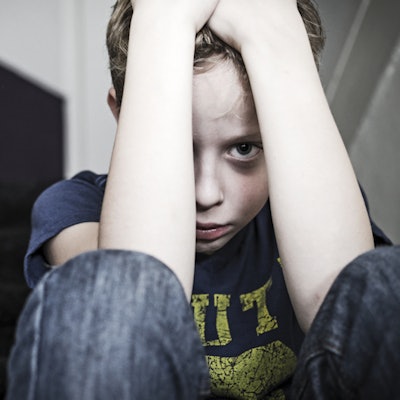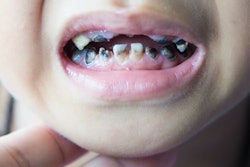
Though caregivers of pediatric dental patients reported mixed feelings about the use of physical restraints, they should be reserved for exceptional circumstances, according to a study published recently in JDR Clinical & Translational Research.
Some caregivers said it was traumatizing for their children to undergo treatment while physically restrained, and others said it protected their kids from injuries. In general, dental teams should consider the feelings and opinions of children and their families when restraints are under consideration, the authors wrote (JDR Clin Trans Res, October 10, 2021).
"Physical restraint in general should remain an extraordinary measure, decided after thorough involvement of the parents and, as much as possible, the child," wrote the group, led by Dr. Christophe Bedos from McGill University Faculty of Dentistry in Montreal.
A debatable patient management strategy
With the development of anesthesia and sedation, the use of physical restraints has declined but has not disappeared from pediatric dentistry. Papoose boards -- boards with canvas flaps that immobilize children -- have been banned in some countries, like the U.K., but still are used with children in North America who resist or fear dental care.
Though dentists in the U.S. use papoose boards, their utilization remains controversial. The use of physical restraints has been described as "barbaric," and it has been documented that restraints can cause patient injuries and affect their respiratory function. Since existing evidence explaining parent perspectives on the matter is inconclusive, the authors of this study sought to gain a better understanding of caregivers' opinions.
To explore the issue, the researchers used a phenomenological approach, which consists of conducting interviews with small groups. They conducted in-depth interviews individually with six parents and caregivers of children who were restrained with papoose boards for nonemergency dental treatment.
Of those parents, three called the papoose experience "traumatic." One mother recalled her 3-year-old screaming throughout the entire one-hour treatment, and the girl struggled the entire time, causing the papoose boards' straps to leave pressure marks on her wrists, the authors wrote.
Another parent called the experience a "betrayal of trust" between the caregiver and child, as well as contrary to their values. A third parent said the child's nonemergency treatment should have been delayed instead of using the board.
Very different opinions emerged from the other caregivers. They said that the papoose board was an appropriate tool that calmed their children, allowed dentists to complete treatments, and made their experiences "less stressful." One caregiver explained that undergoing treatment with the board was safer and more effective than having to hold the child down, which had to be done at previous visits, the authors wrote.
Furthermore, the caregivers who reported negative experiences said the dentist provided little communication about the use of the restraint, they were given too little time to think about using it, and no alternatives were explored. Those who reported positive experiences said they felt part of the decision-making process, the study authors wrote.
Bedos and colleagues noted that the study was conducted in a pediatric hospital in Canada and the findings cannot be generalized to other countries, specifically those that prohibit such restraint.
A family-centered approach
When possible, dentists should consider utilizing alternatives to restraints, including behavioral guidance techniques like "Tell Show Do," as well as conscious sedation. Also, policymakers, dentists, and ethicists should be cognizant of the potential moral issues raised from those who report traumatizing experiences, as well as the importance of including children and families in the decision-making process, according to the authors.
"The dental profession should reflect on the place of children and their families in the clinical encounter and grapple with the importance of consent and how to ensure it in encounters involving children and their parents," they wrote.




















